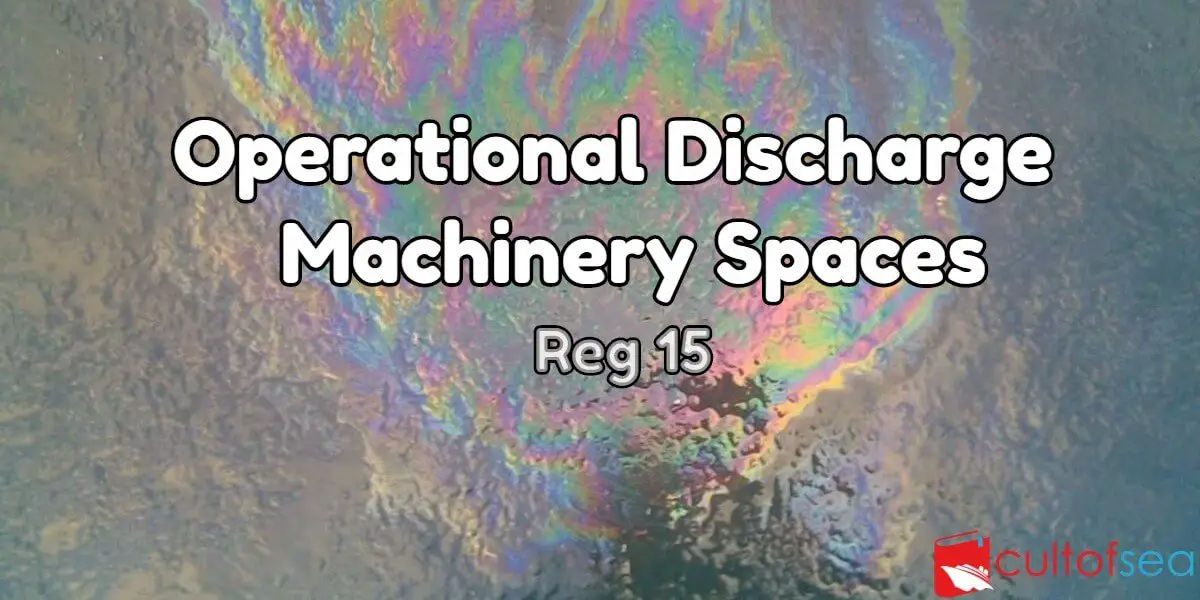Regulation 15
Discharges outside special areas
Any discharge into the sea of oil or oily mixtures from ships of 400 gross tonnage and above shall be prohibited except when all the following conditions are satisfied:
| .1 | the ship is proceeding en route; |
| .2 | the oily mixture is processed through an oil filtering equipment meeting the requirements of regulation 14 (Oil filtering equipment) of Annex 1; |
| .3 | the oil content of the effluent without dilution does not exceed 15 parts per million; |
| .4 | the oily mixture does not originate from cargo pump room bilges on oil tankers; and |
| .5 | the oily mixture, in the case of oil tankers, is not mixed with oil cargo residues. |
Discharges in special areas
Any discharge into the sea of oil or oily mixtures from ships of 400 gross tonnage and above shall be prohibited except when all of the following conditions are satisfied:
| .1 | the ship is proceeding en route; |
| .2 | the oily mixture is processed through an oil filtering equipment meeting the requirements of regulation 14.7 (Oil filtering equipment) of Annex 1; (oil content of the effluent does not exceed 15 ppm, alarm arrangement and automatic 15 ppm stopping device are in place) |
| .3 | the oil content of the effluent without dilution does not exceed 15 parts per million; |
| .4 | the oily mixture does not originate from cargo pump room bilges on oil tankers; and |
| .5 | the oily mixture, in the case of oil tankers, is not mixed with oil cargo residues. |
In respect of the Antarctic area, any discharge into the sea of oil or oily mixtures from any ship shall be prohibited.
Requirements for ships of less than 400 gross tonnage in all areas except the Antarctic area
In the case of a ship of less than 400 gross tonnage, oil and all oily mixtures shall either be retained on board for subsequent discharge to reception facilities or discharged into the sea in accordance with the following provisions:
| .1 | the ship is proceeding en route; |
| .2 | the ship has in operation equipment of a design approved by the Administration that ensures that the oil content of the effluent without dilution does not exceed 15 parts per million; |
| .3 | the oily mixture does not originate from cargo pump room bilges on oil tankers; and |
| .4 | the oily mixture, in case of oil tankers, is not mixed with oil cargo residues. |

English is not my mother language, but theres something I dont understand. The conditions for discharges in and out of special areas seem to be the same. What am I seeing wrong here?
Hello, Ricardo, you were missing that in .2 (special areas) it refers to regulation 14.7 and not 14. however, added another explanation (in bold green) to it. which adds alarm arrangement and automatic stopping.